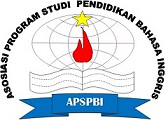AN INTERACTIVE BOOK TO PROMOTE EMPATHY IN EARLY CHILDHOOD TOWARD SOUTH KALIMANTAN'S ENDEMIC WILDLIFE
Abstract
Keywords
Full Text:
PDFReferences
Boerma, I., et al. (2022). Mind mapping during interactive book reading in early childhood classrooms: Does it support young children’s language competence? Early Education and Development, Vol. 33 No. 6: 1077-1093.
Borg, W.R, Gall, M.D., and Gall, J.P. (2007). Educational Research (7th Edition). New York: Longman.
Born, P. (2018). Regarding Animals: A Perspective on the Importance of Animals in Early Childhood Environmental Education. International Journal of Early Childhood Environmental Education, Vol. 5. No. 2: 46-57.
Bus, A. G., Roskos, K., and Burstein, K. (2020). Promising interactive functions in digital storybooks for young children. International perspectives on digital media and early literacy. Routledge.
Davis, J. (1998). Young children, environmental education and the future. Education and the environment, p.141-155.
Davis, J. and Elliott, S. (ed.). (2023). Young children and the environment: Early education for sustainability. Cambridge University Press.
Dick, W., Carey, L., and Carey, J. O. (2005). The systematic design of instruction.
Eisenberg, N. and R. Fabes. (1998).Prosocial development. In Handbook of Child Psychology, Vol. 3. Social, Emotional, and Personality Development, 5th edn. W. Damon, Editor-in-Chief & N. Eisenberg, Ed.: 701–778. Wiley. New York.
Emzir. (2010). Metodologi penelitian pendidikan:kuantitatif dan kualitatif. Jakarta: Rajawali Pers.
Kusumawati, F.P. (2017). Developing English Learning Material for Speaking Skill Based on ADDIE. Premise Journal, 6(1).
Mclaughlin, K. A., et al. (2015). Causal effects of the early caregiving environment on development of stress response systems in children. Proceedings of the National Academy of Sciences, Vol. 112 No. 18, p. 5637-5642.
Moon, J. (2005). Teaching English to young learners: the challenges and the benefits. British Council.
Moreno, A. J., Klute, M. M. and Robinson, J. L. (2008). Relational and individual resources as predictors of empathy in early childhood. Social Development, Vol. 17 No. 3, p. 613-637.
Muhtadi, Ali. (2008). Pengembangan empati anak sebagai dasar pendidikan moral. Online),(http://staff. uny. ac. id/)
Riduwan. (2012). Skala pengukuran variabel-variabel penelitian. Bandung: Alfabeta.
Shin, J. K. (2014). Teaching young learners in English as a second/foreign language settings. In M. C. Murcia, D. M. Brinton, & M. A. Snow (Ed.), Teaching English as a second or foreign language (pp. 550-567). Boston, USA: National Geographic Learning.
Sinaga, D. S. (2018). Developing English Speaking Materials Based on Task-Based Learning for the Eighth Grade of Junior High School Bachelor Thesis. University of Muhammadiyah Sumatera Utara
Turner, M. G., et al. (2015). Landscape dynamics in a rapidly changing world. Landscape Ecology in Theory and Practice: Pattern and Process, p. 333-381.
Wasik, B. A. and Bond, M. A. (2001). Beyond the pages of a book: Interactive book reading
and language development in preschool classrooms. Journal of educational
psychology, Vol. 93 No. 2 p. 243.
Wauters, L. and Dirks, E. (2017). Interactive reading with young deaf and hard-of-hearing children in eBooks versus print books. The Journal of Deaf Studies and Deaf Education, Vol. 22 No. 2, p. 243-252.
Webber, S., et al. (2017). Kinecting with orangutans: Zoo visitors' empathetic responses to animals' use of interactive technology. Proceedings of the 2017 CHI conference on human factors in computing systems, p. 6075-6088.
DOI: http://dx.doi.org/10.20527/jetall.v7i2.21175
Article Metrics
Abstract view : 32 timesPDF - 18 times
Refbacks
- There are currently no refbacks.
This journal is indexed in:


This Journal is listed in:
 Journal of English Teaching, Applied Linguistics and Literatures (JETALL)
Journal of English Teaching, Applied Linguistics and Literatures (JETALL)








.png)



1.png)
